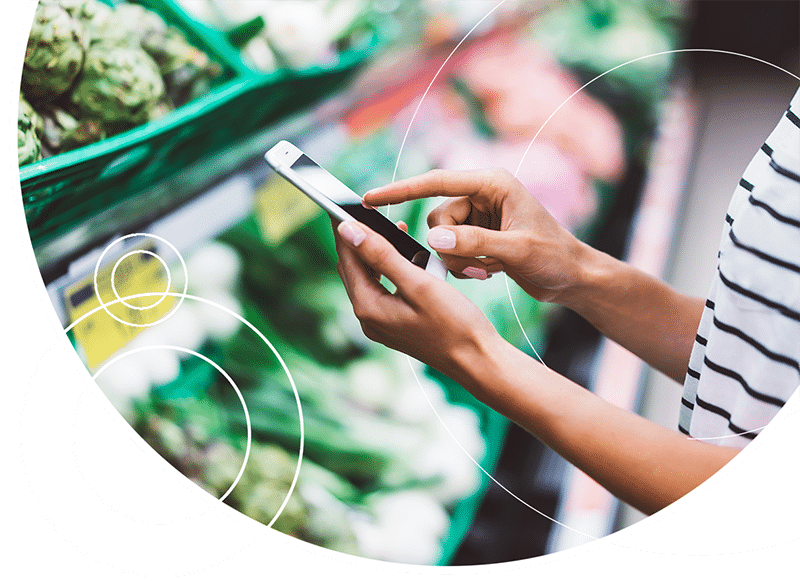To begin, yes, we have all had smartphones for almost 15 years now. And, yes, we all have mobile apps for just about everything—from ordering delivery food and listening to music to buying coffee at the drive-through—even “meeting hot singles in your area” are all part of the not-so-new digital lifestyle. So it begs the question: Where is the digital disconnect?
As we have all heard over the past few years, digital transformation is, by and large, an extremely important thing. The data alone that is generated by certain initiatives can and will absolutely revolutionize businesses. But amid all of the hype, the proclamation that “the future is now,” and all the rest of the great story of digital, the two biggest factors holding it back have been the retailer and the customer—in other words, everyone.
As much as point-solution mobile apps tell an interesting story, the fact remains that digital just wasn’t that important—until now, that is—but I’ll explain that in a minute. The real challenge until now has been that while using apps for music and dating may very well be good for many, ease of use and easy connectivity haven’t been enough of an incentive for the general public when it comes to everyday buying.
Ordering a coffee through an app? Yup, easy to do. Finding a date? Maybe even easier, for some. Trying to get through your entire shopping day navigating a digital-only ecosystem? Not so much. Until now.
It’s not news at this point, but the last three months have been anything but normal. The minute the world got the notification that retail had to effectively shut down for the foreseeable future was, for many, a jaw-dropping, holy $#&! moment where everything had to evolve overnight or it would be lights out for good.
Retailers took matters into their own hands and quickly updated everything from websites, apps, and e-commerce infrastructure to email and video chat. They even found new and better ways to route calls—all to serve the customer who was now also forced to live in a digital-only world. This spawned a new way for people to connect with and shop at stores that were otherwise closed. In the days and months that followed, it also created such a deep sense of customer loyalty that many will now not shop anywhere else but their new favorite “hero” stores.
And yes, they are heroes. The retailers that took a “do whatever it takes” digital approach to accommodate such things as contactless shopping, highly safe and sanitized processes for delivery, and more are all heroes in the eyes of those they served—and continue to serve.
This brings us to today. The economy is now in its next stage of reopening and, with any luck, normal will return. But the more important thing is that the new normal will stay right alongside it because all the things that made retailers heroes during these unprecedented times are not things that can stop now. People have grown accustomed to their new digital ways.
The ability to order easily online, or even pick up a phone and call to reach just the right person, is now expected anywhere and everywhere. The habits that have been formed are there for life, and so must be the retailer. To add to it, retailers now need to take stock of what they accomplished in such a short time, what they could have done better, and what they need to plan for in the weeks and months to come.
Even as stores reopen, as long as guidelines remain in place for social distancing, contactless shopping will still be very real and very important. Therefore, the next step for the wise retailer will be to invest in something as simple as scan-and-pay technology—the ultimate evolution of the contactless experience. The best part is that this is a giant stepping stone to all other digital transformation initiatives. It’s a data-capture engine that builds the beginnings of single-user profiles and gives immediate insight into purchases and interests, and it can be the impetus for leveraging all the other digital tools that were updated during the last quarter.
They say it takes only 21 days to build a new habit. Shoppers have now had 90 days to build lifelong habits that, in turn, support your business. Adding even a few more basic digital tools will inevitably propel your business to new heights and, if nothing else, lead new customers seeking hot retailers in their area to find you.

Andrew Armstrong
Chief Customer Officer
Andrew Armstrong is the Chief Customer Officer at omNovos – working globally with customers to design world-class customer engagement programs. He’s a prolific writer and speaker on topics including customer loyalty, personalization, and retail marketing technologies. Connect with him on LinkedIn or Twitter - his open approach to all topics usually leads to a fun discussion and a few laughs.

